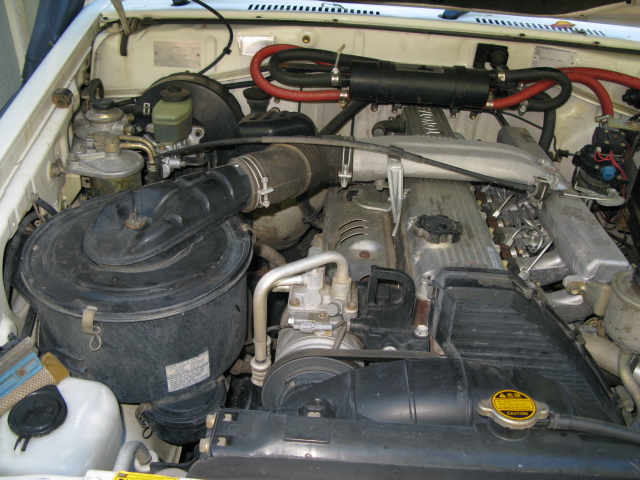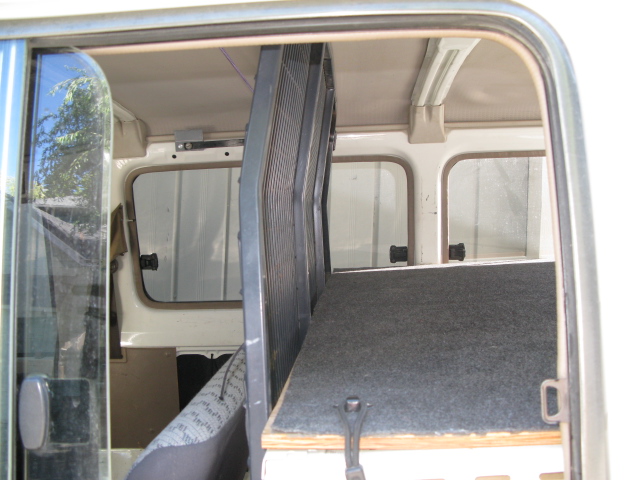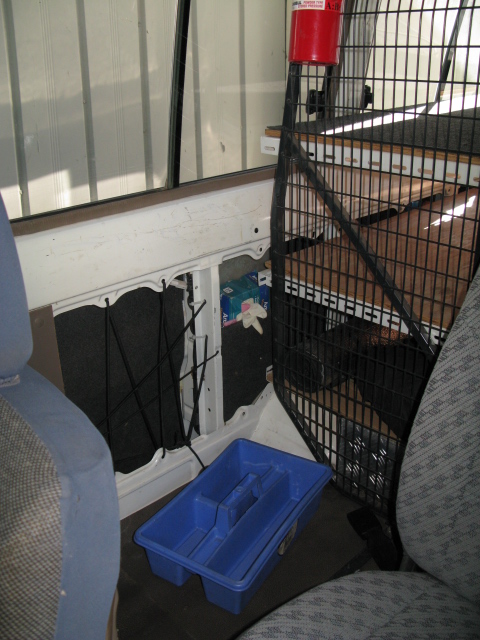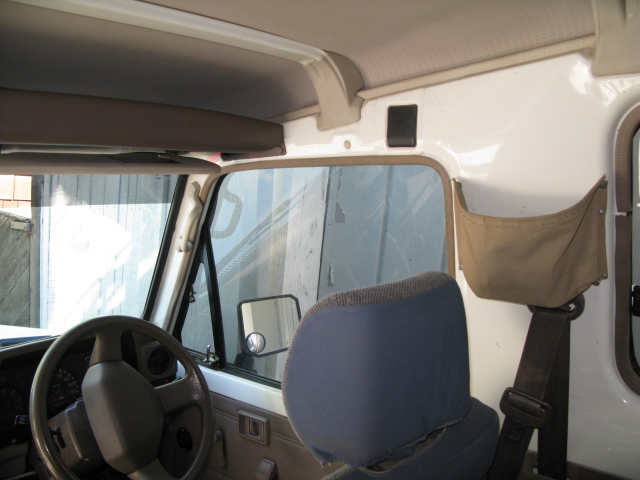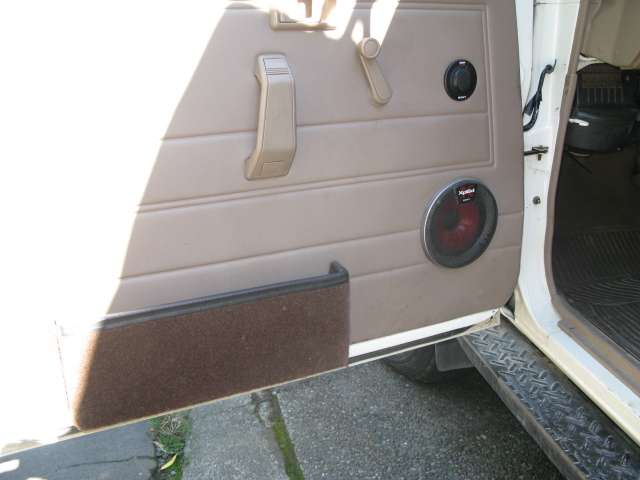Hello all,
I wanted to document the build-up of our troopy. I'll do it sections at a time, when time permits.
We bought it in October 2002. I spent quite some time in Sydney looking for a good Troopy. All the kitted out ones were too expensive, all the 78 series ones were too expensive, the cheap ones were beat up, yaddy ya.
Finally, I found one down near Canberra, with Victoria plates. The Victoria plates turned out to be lucky as they can be renewed without an inspection - you only need an inspection when transferring ownership - I can renew the rego online. It had no rust, only 70k kilometers, and all maintenance records. It was pretty bare bones - not even the back seats. It included two diesel tanks, 90 liters each, a snorkel and, inside, a cargo barrier, which turned out to be great.
Back in Sydney, we rented a house for the month, with a garage, and I spent a few weeks kitting it out, with occasional trips into the bush to test things out. I went to various 4wd shows and got "show prices" on almost all the gear, which really made things a lot cheaper.
Let me start with the outside.
I added a front bull bar, with a Warn winch. Tabs were welded on for the lights - one fog and one driving light - and the lights were spot-welded on, to avoid theft.


I bought a Kaymar rear bumper, with dual swing-away tire carriers. A lot of folks have had rear door hinge trouble when they keep the tire on the door. Plus having two spares is pretty crucial for way outback Australia and Namibia. The tires can be locked onto the carrier. Also, I had a small tab welded onto the tire carrier so that I can lock the left-hand tire carrier - this means the rear door cannot be opened. Since the cargo barrier separates the front of the troopy from the rear, locking the rear door this way makes the back very secure.
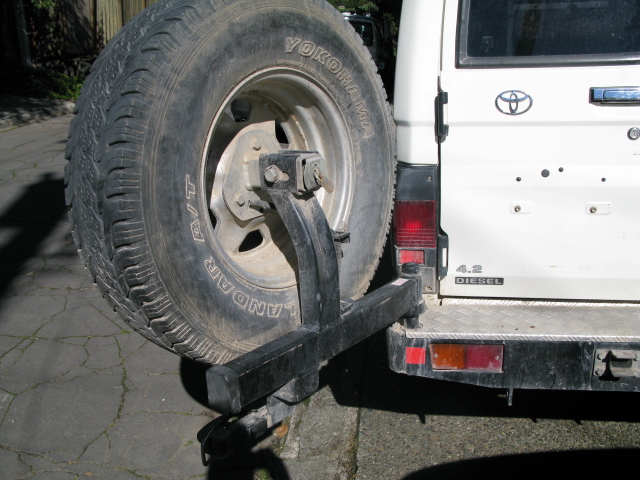


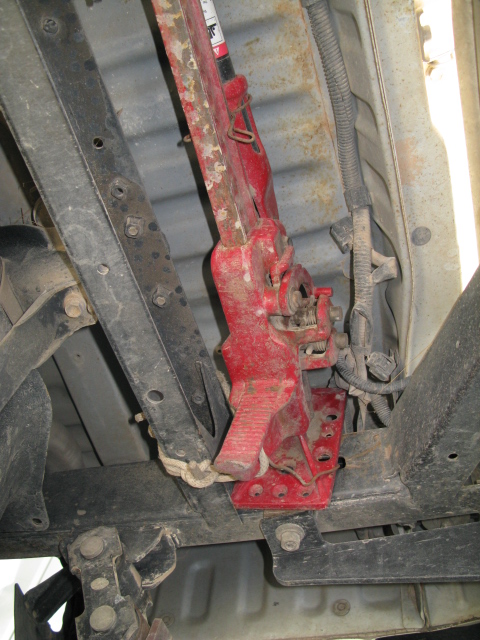
You can see from that last photo that I have the Hi-Lift tucked underneath. I have not been very happy with that decision. It does keep the weight low, but it gets really caked with dust and getting it out is a real PITA. The holding pins sheared off and now it is held in by spit and bailing wire. Dumb. I have been meaning to move it somewhere else, but just haven't around to it. One day, I'll get stuck butt-deep in mud and that will be my payback for delaying that move.
Up top, I got a full-length roof-rack, which is designed for use with a roof-top tent - there are railings along the front half but not the back half:
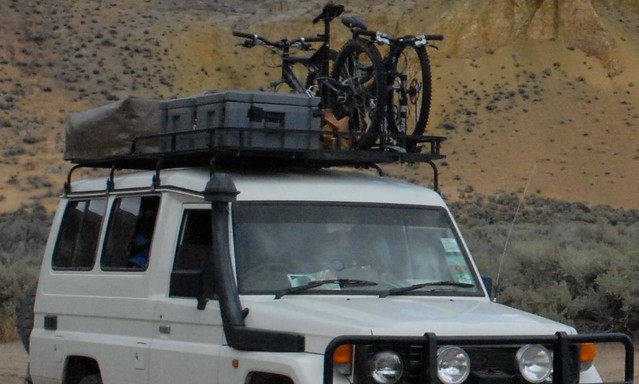
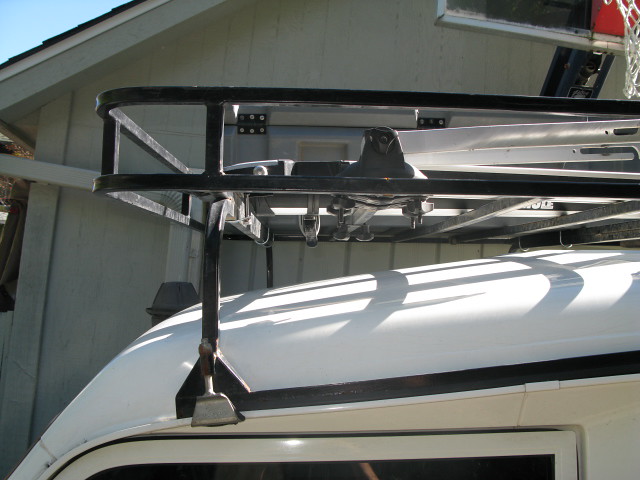
The roof-rack has a full-length gutter rail, with four clamps on each side. I have had no problems with it at all, but I wish I had paid for anodized (??) rather than painted. Others have had trouble with this same model and had to weld repair.
The plastic box on top is for storing light stuff, like sleeping bags, tent, tarps, hammock, etc.
The roof-top tent is a Howling Moon 1.4 Deluxe, which was simply fantastic for 2 people, in Australia and Africa. It sets up in just a few minutes. The foam mattress is 2.5 inches think and very firm and comfy. You can close it up with sheets, pillows, and a reasonably thick blanket. When open, it covers our cooking area from sun or rain. If windy, we can wrap tarps around the cooking area. In Africa, it is nice to be high enough that only elephants can mess with you. We have had no trouble with ours, except when my Mom drove into a tree branch. Yes, it does make it top-heavy but that is a price I am willing to pay for a comfy place to sleep.
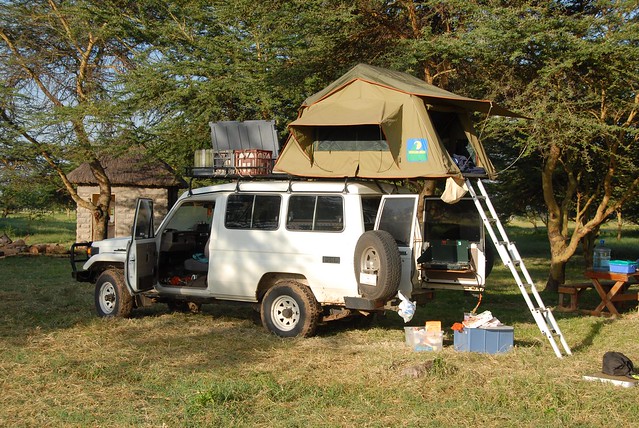
One downside is that it does not do well in high winds - above 20 mph wind and you have trouble sleeping, above 40 mph and it is time to sleep elsewhere. The rain fly on our older model pretty much sucks - it flaps around in the slightest breeze, and I often remove it when the chance of rain is low. (The newer models have a much better design.)
Another downside is that they really are more appropriate for desert travel. If it is wet when you pack it up, all the bedding will get a bit damp - not terrible, but not all that much fun day after day. You need to get it dry every few days. The rainy season in eastern Africa was not a big problem because it seemed to rain hard and then clear up quickly. But here in Seattle, where it can be damp/wet for days, it could be a drag.
Finally, underneath, I put on much beefier springs both front and back and added an ARB locker to the rear.
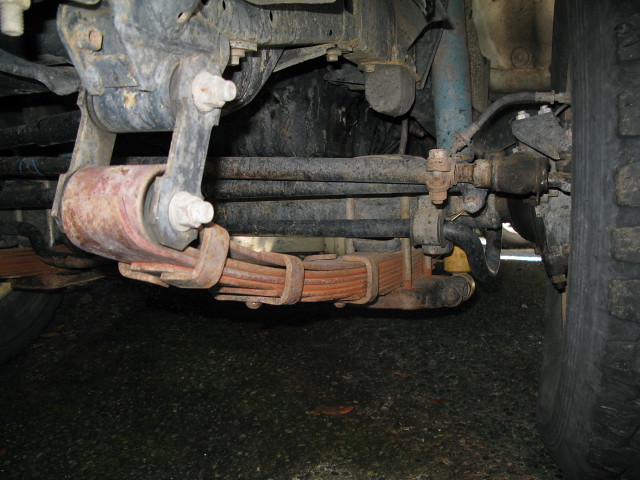
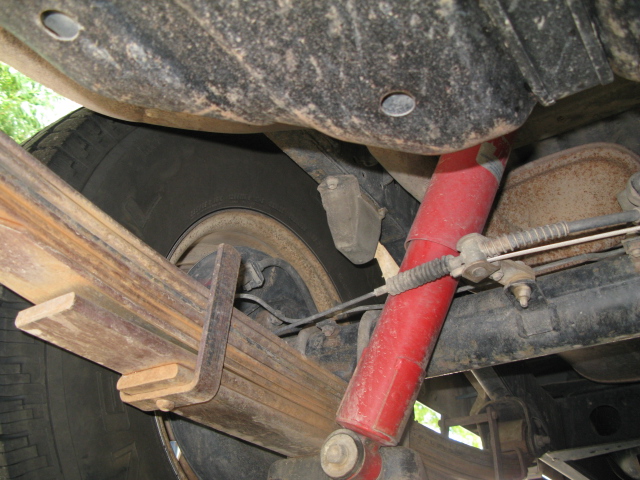
Originally, I put on BFG ATs, which lasted all the way through Australia and many months in Africa. They were incredibly chipped by the end and totally blew out when they finally went. BFGs were too expensive in Namibia, so I got some Dunlop Road Grippers, which lasted quite a while, but really sucked in mud. I will go back to BGFs now that I can get them at US prices.
That's enough for now. More later...
I wanted to document the build-up of our troopy. I'll do it sections at a time, when time permits.
We bought it in October 2002. I spent quite some time in Sydney looking for a good Troopy. All the kitted out ones were too expensive, all the 78 series ones were too expensive, the cheap ones were beat up, yaddy ya.
Finally, I found one down near Canberra, with Victoria plates. The Victoria plates turned out to be lucky as they can be renewed without an inspection - you only need an inspection when transferring ownership - I can renew the rego online. It had no rust, only 70k kilometers, and all maintenance records. It was pretty bare bones - not even the back seats. It included two diesel tanks, 90 liters each, a snorkel and, inside, a cargo barrier, which turned out to be great.
Back in Sydney, we rented a house for the month, with a garage, and I spent a few weeks kitting it out, with occasional trips into the bush to test things out. I went to various 4wd shows and got "show prices" on almost all the gear, which really made things a lot cheaper.
Let me start with the outside.
I added a front bull bar, with a Warn winch. Tabs were welded on for the lights - one fog and one driving light - and the lights were spot-welded on, to avoid theft.


I bought a Kaymar rear bumper, with dual swing-away tire carriers. A lot of folks have had rear door hinge trouble when they keep the tire on the door. Plus having two spares is pretty crucial for way outback Australia and Namibia. The tires can be locked onto the carrier. Also, I had a small tab welded onto the tire carrier so that I can lock the left-hand tire carrier - this means the rear door cannot be opened. Since the cargo barrier separates the front of the troopy from the rear, locking the rear door this way makes the back very secure.




You can see from that last photo that I have the Hi-Lift tucked underneath. I have not been very happy with that decision. It does keep the weight low, but it gets really caked with dust and getting it out is a real PITA. The holding pins sheared off and now it is held in by spit and bailing wire. Dumb. I have been meaning to move it somewhere else, but just haven't around to it. One day, I'll get stuck butt-deep in mud and that will be my payback for delaying that move.
Up top, I got a full-length roof-rack, which is designed for use with a roof-top tent - there are railings along the front half but not the back half:


The roof-rack has a full-length gutter rail, with four clamps on each side. I have had no problems with it at all, but I wish I had paid for anodized (??) rather than painted. Others have had trouble with this same model and had to weld repair.
The plastic box on top is for storing light stuff, like sleeping bags, tent, tarps, hammock, etc.
The roof-top tent is a Howling Moon 1.4 Deluxe, which was simply fantastic for 2 people, in Australia and Africa. It sets up in just a few minutes. The foam mattress is 2.5 inches think and very firm and comfy. You can close it up with sheets, pillows, and a reasonably thick blanket. When open, it covers our cooking area from sun or rain. If windy, we can wrap tarps around the cooking area. In Africa, it is nice to be high enough that only elephants can mess with you. We have had no trouble with ours, except when my Mom drove into a tree branch. Yes, it does make it top-heavy but that is a price I am willing to pay for a comfy place to sleep.

One downside is that it does not do well in high winds - above 20 mph wind and you have trouble sleeping, above 40 mph and it is time to sleep elsewhere. The rain fly on our older model pretty much sucks - it flaps around in the slightest breeze, and I often remove it when the chance of rain is low. (The newer models have a much better design.)
Another downside is that they really are more appropriate for desert travel. If it is wet when you pack it up, all the bedding will get a bit damp - not terrible, but not all that much fun day after day. You need to get it dry every few days. The rainy season in eastern Africa was not a big problem because it seemed to rain hard and then clear up quickly. But here in Seattle, where it can be damp/wet for days, it could be a drag.
Finally, underneath, I put on much beefier springs both front and back and added an ARB locker to the rear.


Originally, I put on BFG ATs, which lasted all the way through Australia and many months in Africa. They were incredibly chipped by the end and totally blew out when they finally went. BFGs were too expensive in Namibia, so I got some Dunlop Road Grippers, which lasted quite a while, but really sucked in mud. I will go back to BGFs now that I can get them at US prices.
That's enough for now. More later...
Last edited:


